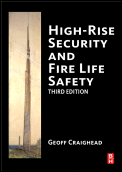The Right and Wrong of Fire Alarm Systems
1. Which of the following would be considered having final approval of a fire alarm system installation?
a. Fire inspector
b. Owner
c. Insurance company
d. UL
e. All of the above
2. The National Fire Alarm Code mandates spacing of 900 square feet for smoke detectors.
a. True
b. False
3. The maximum distance between manual pull stations is
a. 50 feet.
b. 100 feet.
c. 200 feet.
d. 400 feet.
4. Duct detectors must be installed in accordance with NPFA
a. 90A.
b. 72.
c. 70.
d. A and B
e. A and C
f. All of the above
5. The number of sprinkler flow valves on a single zone shall not exceed
a. one.
b. five.
c. 10.
d. 20.
6. Which of the following cable substitutions is permissible?
a. CMP for CL3 for CL3R for CL2P
b. CL3P for CL2R for CL2 for CMX
c. CMR for CL3R for CL3P for CMP
d. CL3X for CL3 for CL3R for CL3P
7. A dry cell battery shall be considered an inherently limited Class 2 power source proved the voltage is
a. less than 12 volts.
b. 24 volts or less.
c. 30 volts or less.
d. less than 7 amps.
8. According to NFPA 72, all detection devices used for door hold-open release service do not necessarily have to be monitored for integrity because they are outputs from the alarm system.
a. True
b. False
9. Which of the following types of fire-rated wire is permitted to be run vertically from floor to floor?
a. FPLR
b. FPLP
c. FPL
d. NPLP
10. Spacing of a smoke detector in a hallway, 10 feet wide or less shall be ________ feet.
a. 15
b. 30
c. 41
d. 48
11. A fire alarm system that does not include a testing and maintenance agreement is
a. illegal.
b. a central station system.
c. a local system.
d. a remote station system.
e. not permitted by most AHJs.
12. Lights used for fire alarm signaling shall be no more than
a. 15cd.
b. 75cd.
c. 110cd.
d. 1000cd.
13. Ceiling-mounted visible notification appliances shall not be mounted on ceilings
a. at all.
b. above 10 feet.
c. above 15 feet.
d. above 30 feet.
e. above 41 feet.
14. Waterflow devices shall be tested
a. monthly.
b. quarterly.
c. annually.
d. each time the system is serviced.
15. Video image flame detection is not yet approved by the code because it is still new technology.
a. True
b. False
What’s Wrong With This?

|
A technician installed a fire alarm and followed the National Fire Alarm Code and the blueprints. He placed everything just as he was supposed to. The inspector looked in the ceiling and failed the inspection. Can you determine what the technician did wrong? (Hint: The ceiling is NOT a plenum).
Answer to: What's Wrong With This?

|
The technician only read NFPA 72. He didn’t refer to NFPA 70. The technician did not support the wires as specified by the National Electrical Code. He laid the fire alarm cable on the suspended ceiling instead of supporting them independently above the ceiling.
5-Minute Tech Quiz Answers
1. e
2. b — The code suggests 30 ft. spacing in the absence of other engineering data.
3. d
4. d
5. b — NFPA 72, Loading Capacities, 8.6.3.3.3.4
6. b — NFPA 70, Table 725.154(G)
7. c — NFPA 70, 725.121 (A) (5)
8. b
9. a — “R” indicates riser cable and can be run vertically.
10. c — NFPA 72, A5.6.5.2a(g)
11. d — For a central station system a maintenance agreement must be in place.
12. d
13. d — NFPA 72, 7.5.4.3.6
14. b
15. b
Note: The 2007 NFPA and 2008 NEC are referenced because many of the states still reference those two code editions.









